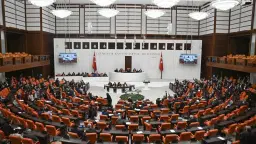
Bozkurt Aran, Director of TEPAV Center for Multilateral Trade Studies
The threatening winds of change have forced the global architecture of the last seven decades to create new ground rules necessary to regulate new issues of services, e-commerce, and cross-border data flows. A huge task by itself nowadays, the pursuit to create new rules that will provide solutions was compounded by a series of anti-globalist populist policies adopted by the system’s major stakeholders. The last meaningful multilateral agreement adopted was over 25 years ago at the Uruguay Round in 1994. Since then, there have been some minor agreements at the multilateral level, such as the agreement on Trade Facilitation, but these fell short of providing solutions to pressing global trade issues.
The sheer momentum of technological advances brought about a sense of urgency to the process. The need to add new chapters to the existing rule book of trade could have been depicted as business as usual for the World Trade Organization (WTO) had the organization kept its central role and relevance in matters of global trade.
The rule-making processes of the global trading system initially began with efforts aimed at “multilateralism,” which in seven decades became a push for “plurilateralism.”
Unfortunately, the attempts were not successful; thus, multi-national trade agreements were once again replaced by raw “bilateralism.” Subsequently, the global system entered an era of uncertainty.
Current trade tensions between the US and China do not only stem from the huge trade deficit but also from the possibility of a Chinese challenge for global leadership.
As the Trump Administration’s trade strategy unfolds, a coherent approach is beginning to surface. The methods the US resort to go well beyond conventional trade measures, bordering on antagonism. The US aims to find solutions to structural issues in its bilateral relations with China through a trade deal. Will the weaponization of trade prevail as a tool of coercion to achieve strategic influence among major stakeholders in the future?
The methods the Trump Administration resort to go well beyond conventional trade measures. In other words, trade is being used as a tool of coercion to accomplish foreign and security policy goals. At this point, is it safe to assume that the weaponization of trade will prevail as a way for other major stakeholders to follow?
You may read this commentary from here.
This commentary was published in Turkish Policy Quarterly on 19.03.2019





